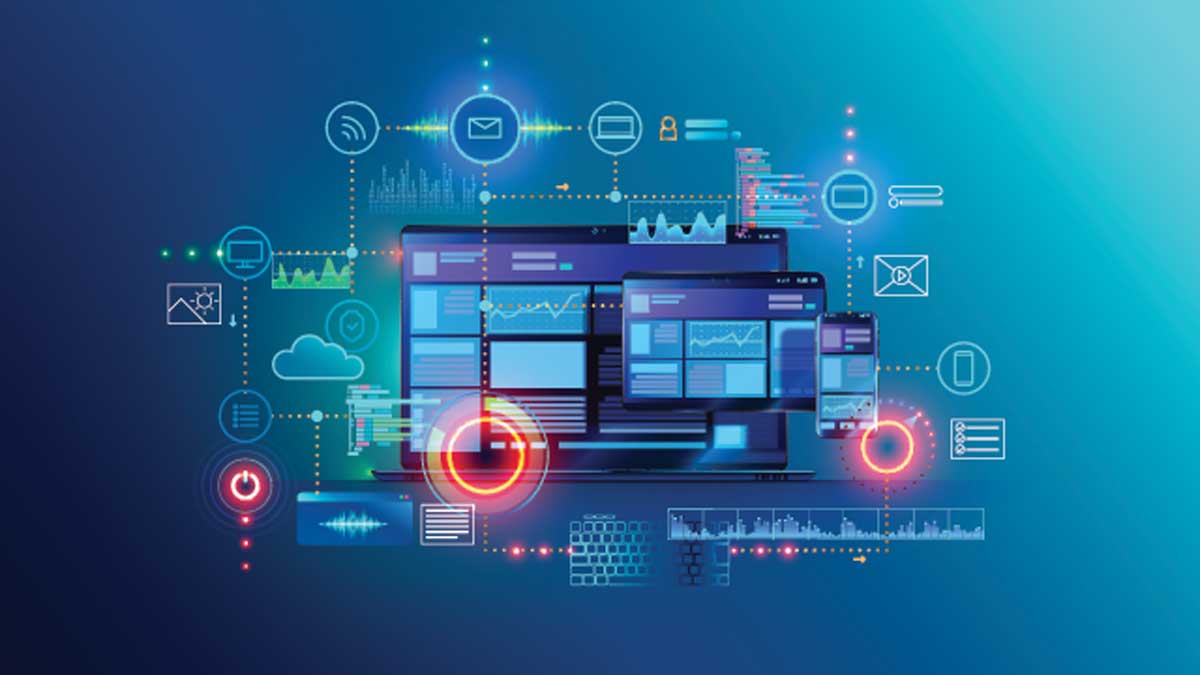Application Modernization – It’s never been more critical to modernize your legacy applications.
Companies across all industries have faced a tremendous amount of disruption over the last couple of years, including the global pandemic, increased competition, rapid shifts in buying behavior, supply chain challenges, shrinking margins, and so much more.
In order to survive and adapt, companies have been forced to transform their business models and organizations, adopt new technologies, and move to the cloud at an accelerated pace. They must support the rapid growth of digital interactions and increased demand for digital services from their customers, employees, and partners. However, many companies quickly recognized that their current infrastructure, along with many of the existing applications that have been at the core of their business for years, won’t cut it in this “new normal.”
Modernization is critical for supporting these efforts and as a result, has become a business imperative. While there are many reasons for this, let’s take a closer look at some of the top reasons why companies should modernize their applications.
1. Cloud: Application modernization is essential for a successful move to the cloud
As the pandemic began, companies everywhere needed to find ways to increase their resilience, scalability, and flexibility quickly. Because of the rapid increase in the volume and importance of digital interactions, there was a much greater demand for flexible computing capacity, distributed backups, and greater availability. So, they looked to the cloud platform.
Evolving business needs have forced change as well. For example, eCommerce transactions surged even more. Everyone was forced to buy online during the pandemic. And the number of online healthcare visits dramatically increased. All of this puts even more stress on the online infrastructure of most companies.
While leveraging the Cloud is critical in meeting these needs, many legacy applications aren’t Cloud-ready and must be modernized for the Cloud. Therefore, application modernization is an essential component of Cloud migration success.
2. Knowledge: Many modern developers don’t understand legacy systems.
Many legacy systems have code that’s been in place for 10, 20, and maybe even 30 years. The people who originally designed the applications are retired, and it’s difficult for newer developers to work within them optimally. This means that maintenance, updates, and upkeep of these systems become more challenging over time.
3. Hiring: It’s difficult to find talent to support outdated technologies.
It’s becoming increasingly difficult to find developers and talent that can actually support those technologies. On the other hand, if you can find developers who do want to work in these systems, they may not be the ones you want to hire full-time. They may not have modernized their skillsets, and often prefer to remain in the comfort zone of these legacy technologies.
4. Burden: Outdated technology prevents progress and innovation.
The older your technology gets the more time and effort required to manage it increases. This can impede your ability to push new projects forward. You spend so much of your IT resources’ time trying to just keep the old infrastructure intact and ensure it can scale to meet the new demands. But you don’t have the ability to effectively modernize and push new things forward.
5. Usability: Legacy UI issues create challenges.
Most legacy systems weren’t designed for mobile. Many were not designed for modern, high-resolution screens. Some companies are trying to modernize all the way from “green screen” sorts of solutions. Applications developed 15 or more years ago have UIs that weren’t designed for mobile devices and tablets. Yet their purpose and functionality may be still critical today.
6. Cost: Managing and maintaining legacy technologies is expensive.
It’s increasingly expensive to maintain and support legacy systems from a time, effort, and resource utilization perspective. There are maintenance costs, downtime costs, customer support costs, security costs, and of course, lost revenue costs. In addition, software licensing costs can increase as well. To put the scale of legacy costs in perspective: The Government Accountability Office estimates that ten of the federal government’s legacy systems cost taxpayers roughly $337 million per year to operate and maintain. In addition, software licensing costs can increase as well.
7. Support: Old applications fall out of support.
For example, some applications may have been built on a legacy browser technology like Internet Explorer that now must be tested and upgraded so that they support more modern browsers. It can be difficult to blend older legacy systems with newer technology. This can take unnecessary time and pull resources away from other more important development tasks. Old applications that need to be re-engineered for outdated technology create an inefficient development process.
8. Integrations: Integrations for outdated technologies are challenging, complex, and costly to maintain.
Some of the integrations between your legacy systems and others have become very challenging to support. As new systems, partners, and channels are added, integrations become even more challenging to create and manage. This is because the platform may lack the specific connections your application needs for integration.
9. Security and Compliance: Outdated applications don’t support modern logging and security standards.
It’s very difficult to secure some of these outdated legacy technologies. They don’t support all the modern logging and security standards needed to protect your business. Outdated systems are more susceptible to cybersecurity attacks. This creates increased risk because outdated software and hardware assets miss out on the latest security updates and patches from vendors. Without the latest patches installed, these systems are vulnerable to malware, spyware, viruses, and other cyberattacks. This also creates significant compliance issues for those in regulated industries.
10. Incompatibility: Many legacy systems aren’t compatible with critical modern technologies.
Many legacy systems are incompatible with the modern technologies companies must leverage to achieve their business and technology goals, including cloud-based solutions, AI, machine learning, advanced analytics, and more. This creates a huge barrier to digital transformation success and can make companies less competitive in a very challenging and dynamic marketplace. Modernization is a complex process however, it is necessary for high-performing teams to succeed.
The Benefits of Application Modernization
While application modernization is by no means easy and there are many challenges to overcome throughout the journey, the investment in modernization is worth it. There are many benefits that your business can realize, including:
-
Supporting moving to the cloud and unleashing the benefits of the cloud
-
Reducing application support and maintenance costs
-
Freeing up your IT resources to work on higher-value initiatives
-
Enabling and accelerating digital transformation initiatives
-
Allowing technical debt to be retired
-
Reducing application count and complexity
-
Reducing training needs
- Facilitating growth and innovation
Also, whether you’re just getting started or far along in your modernization journey, our team is here to help. Learn more about our wide range of app development and cloud consulting services, and feel free to reach out to us for assistance. We’re always happy to help.
About the Author
Kolby is Eliassen Group’s Vice President of Application Development. He has been working in IT Consulting for over 25 years – the last 15 working as a Solution Architect and technology leader with Eliassen Group.
Since founding the Application Development Practice at Eliassen Group, Kolby has worked to build a culture that is passionate about the success of Eliassen Group’s clients.
He has been a long-term advocate of modern application development principles including agile SDLCs, increased test automation, and lightweight services/microservices. He has extensive experience with a variety of technologies, including the latest web and cloud-native solutions.



